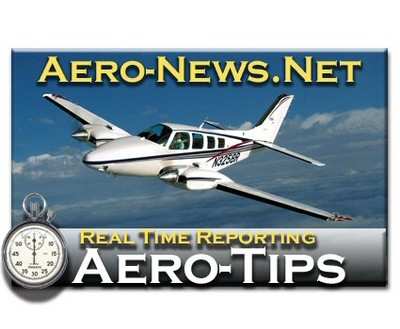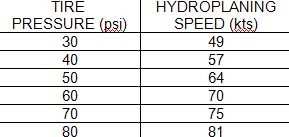Sun, Jul 02, 2006
Aero-Tips!
A good pilot is always learning -- how many times have you
heard this old standard throughout your flying career? There is no
truer statement in all of flying (well, with the possible exception
of "there are no old, bold pilots.")

Aero-News has called upon the expertise of Thomas P. Turner,
master CFI and all-around-good-guy, to bring our readers -- and us
-- daily tips to improve our skills as aviators. Some of them, you
may have heard before... but for each of us, there will also be
something we might never have considered before, or something that
didn't "stick" the way it should have the first time we memorized
it for the practical test.
Look for our daily Aero-Tips segments, coming each day to
you through the Aero-News Network.
Aero-Tips 07.02.06
Landing on a wet runway? Beware of hydroplaning.
Hydroplaning occurs when a thin film of water builds between a
tire and actually lifts it from the runway. Tires are no longer in
contact with the ground; braking looses its effectiveness, and you
may not be able to steer the airplane.
Studies show that hydroplaning can occur in as little as
one-tenth inch of water. The speed at which an airplane tire
hydroplanes is a direction function of the tire pressure. The National Aeronautics and Space Administration
(NASA) identifies the hydroplaning critical speed as
nine times the square root of the tire pressure. This means most
light airplanes can hydroplane at as low as 50 knots.

NASA Critical Speed for
Hydroplaning
Landing on a wet runway
Aviation legend Sparky Imeson tells us that to avoid
hydroplaning when landing on a wet runway:
- Touch down as close to the approach end of the runway as
possible, to maximize available landing distance
- Plan a firm arrival, to put the tires solidly against the
pavement
- Lower the nose wheel as soon as possible to maximize steering
capability
- Avoid applying brakes at or above the NASA critical speed for
your airplane
- Retract flaps to put more weight on the wheels, increasing
directional control (note: attempting to retract flaps during the
landing roll is a common cause of inadvertent landing gear
retraction in retractable-gear airplanes)
- Divert to a more suitable airport if a wet runway is combined
with a crosswind
Aero-tip of the day: Anticipate hydroplaning,
and adjust your landing technique accordingly.
More News
Aero Linx: Aviators Code Initiative (ACI) Innovative tools advancing aviation safety and offering a vision of excellence for aviators. The ACI materials are for use by aviation pra>[...]
Make Sure You NEVER Miss A New Story From Aero-News Network Do you ever feel like you never see posts from a certain person or page on Facebook or Instagram? Here’s how you c>[...]
From 2016 (YouTube Edition): Who You Gonna Call When You Have a Rocket Engine that Needs a Spacecraft? While at EAA AirVenture 2016, ANN CEO and Editor-In-Chief, Jim Campbell, sat >[...]
"In my opinion, if this isn't an excessive fine, I don't know what is... The odds are good that we're gonna be seeking review in the United States Supreme Court. So we gotta muster>[...]
Expedite Used by ATC when prompt compliance is required to avoid the development of an imminent situation. Expedite climb/descent normally indicates to a pilot that the approximate>[...]
 ANN's Daily Aero-Linx (04.30.25)
ANN's Daily Aero-Linx (04.30.25) ANN FAQ: Turn On Post Notifications
ANN FAQ: Turn On Post Notifications Classic Aero-TV: Agile Aeros Jeff Greason--Disruptive Aerospace Innovations
Classic Aero-TV: Agile Aeros Jeff Greason--Disruptive Aerospace Innovations Aero-News: Quote of the Day (04.30.25)
Aero-News: Quote of the Day (04.30.25) ANN's Daily Aero-Term (04.30.25): Expedite
ANN's Daily Aero-Term (04.30.25): Expedite




